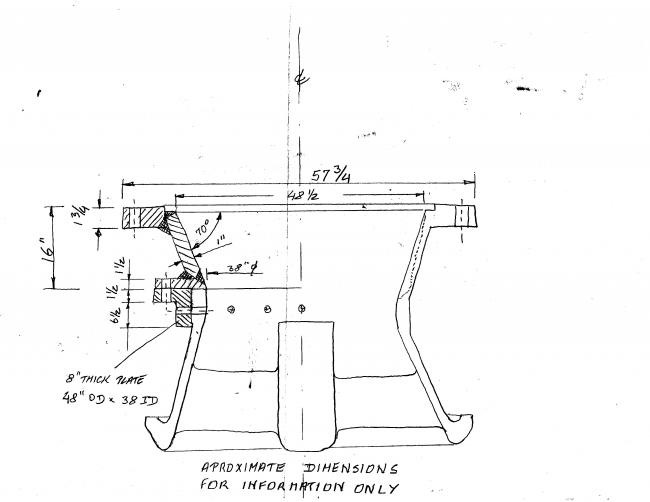How long should a vertical pump’s suction bell last? That was a question a plant manager asked me during a recent consulting assignment for a power plant. A pump manufacturer’s typical response to such a question is, “it depends.”
So what does it depend on? Basically, it depends upon the liquid being pumped, the operating point on a curve, the accumulated hours, the materials of construction, and so on.
But is there an average value, or does a pump life vary within a very broad range? Is 30 years of life considered a very long time? Is two years unacceptably low?
If a large vertical cooling water or recirculating pump supplies water to the plant, 15 (or more) years of life should be achievable. Anything under five years is too short for most applications. If water comes in from the ocean or a gulf, the pump life (i.e. impeller, casing cone, bell) will be reduced, especially if a pump operates off-design, where suction recirculation is particularly damaging and the seawater is known to be very corrosive.
Often, damage to the impeller casing (cone – at immediate proximity to the vanes) is much more severe as compared to the damage of the bell (below the impeller) itself. In recognition of this fact, some designs are deliberately configured into a two-piece construction where the impeller casing (cone) is bolted to the bell, thus making it simpler to replace. For large vertical turbine pumps, these parts are expensive, and separating a shorter-expectancy-life part from a longer-expectancy-life part is a good idea.
Unfortunately, many designs configure the impeller casing and bell into one continuous unit because it is obviously cheaper to produce a single-piece casting. The problem here is that when the casing gets damaged, the entire part must be scrapped and replaced – and the end user pays for that.
When examining such a worn-out casing cone/bell part, an effective upgrade strategy involves modifying the design by separating the part into two pieces and then bolting them back together. An example of such an upgrade was recently done by our repair shop.
Suction bells are usually constructed from iron, which is significantly less expensive than stainless steel but lacks its resistive properties. Upgrading an entire piece is another possibility, but it is often too expensive and really unnecessary. Instead, a two-piece construction will have a new stainless cone, bolted to the old bell and fitted with a stainless flange:


Step 1. Inspection reveals damage is mostly at the impeller casing (cone) area.


Step 2. The piece is separated and the upper part (cone) is discarded. The lower portion (bell) is remachined to accept a stainless steel flange.
Step 3 (below) – the upper part is fabricated entirely form stainless steel, and bolted to the stainless flange of the lower part (bell):
 The result is a much better design, with stainless steel providing many more years of operation at enhanced resistance to corrosion and cavitation damage.
The result is a much better design, with stainless steel providing many more years of operation at enhanced resistance to corrosion and cavitation damage.


Here is a new stainless bell being prepared for this retrofit work.
And should the lower portion (bell) eventually need repair, it can be done, saving time and money by reusing the undamaged stainless upper part.
We cannot change the single-piece past. But we can certainly improve the life of individual components, once the deficiencies of past practices are realized, understood – and corrected.
Pumps & Systems, November 2006


